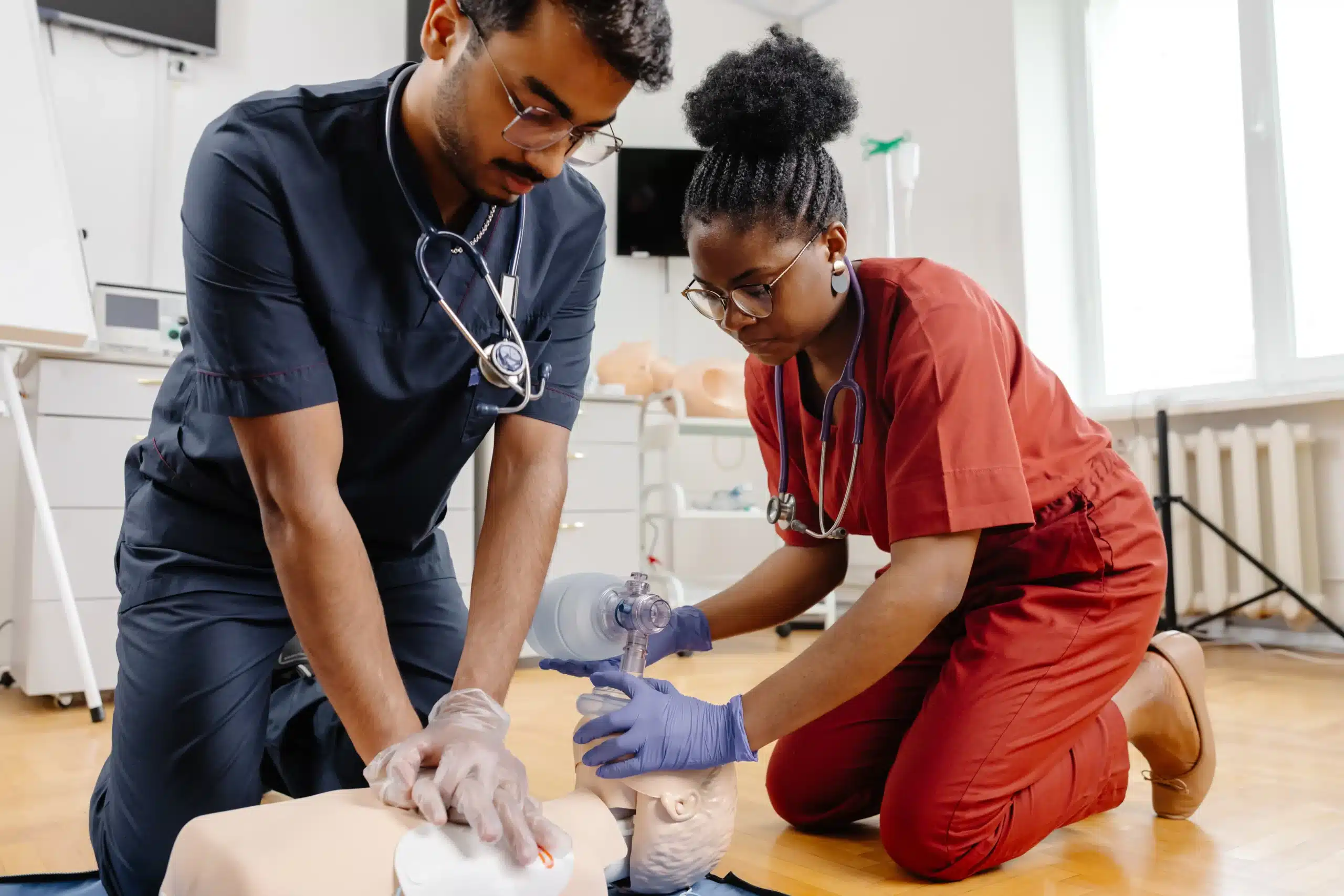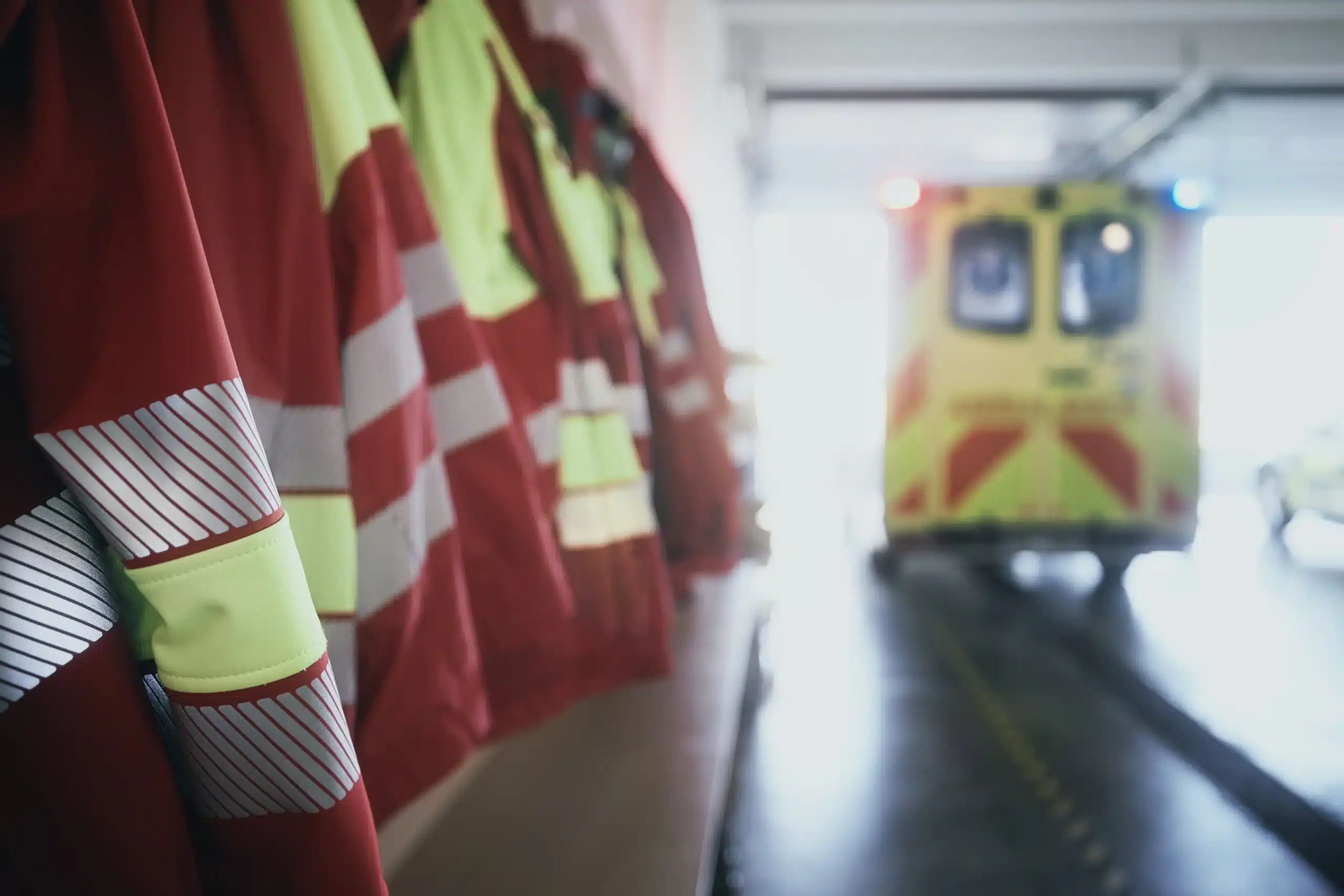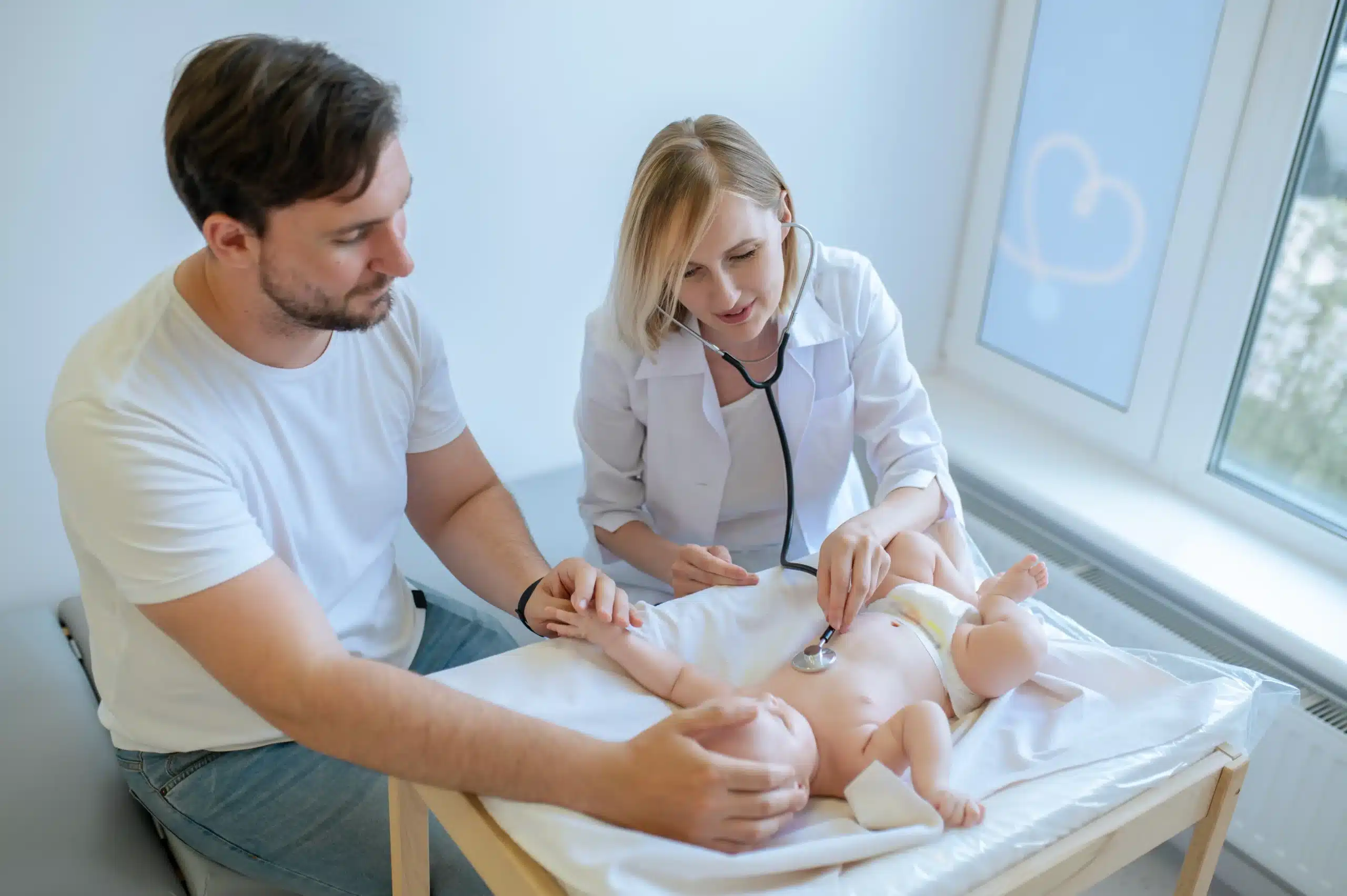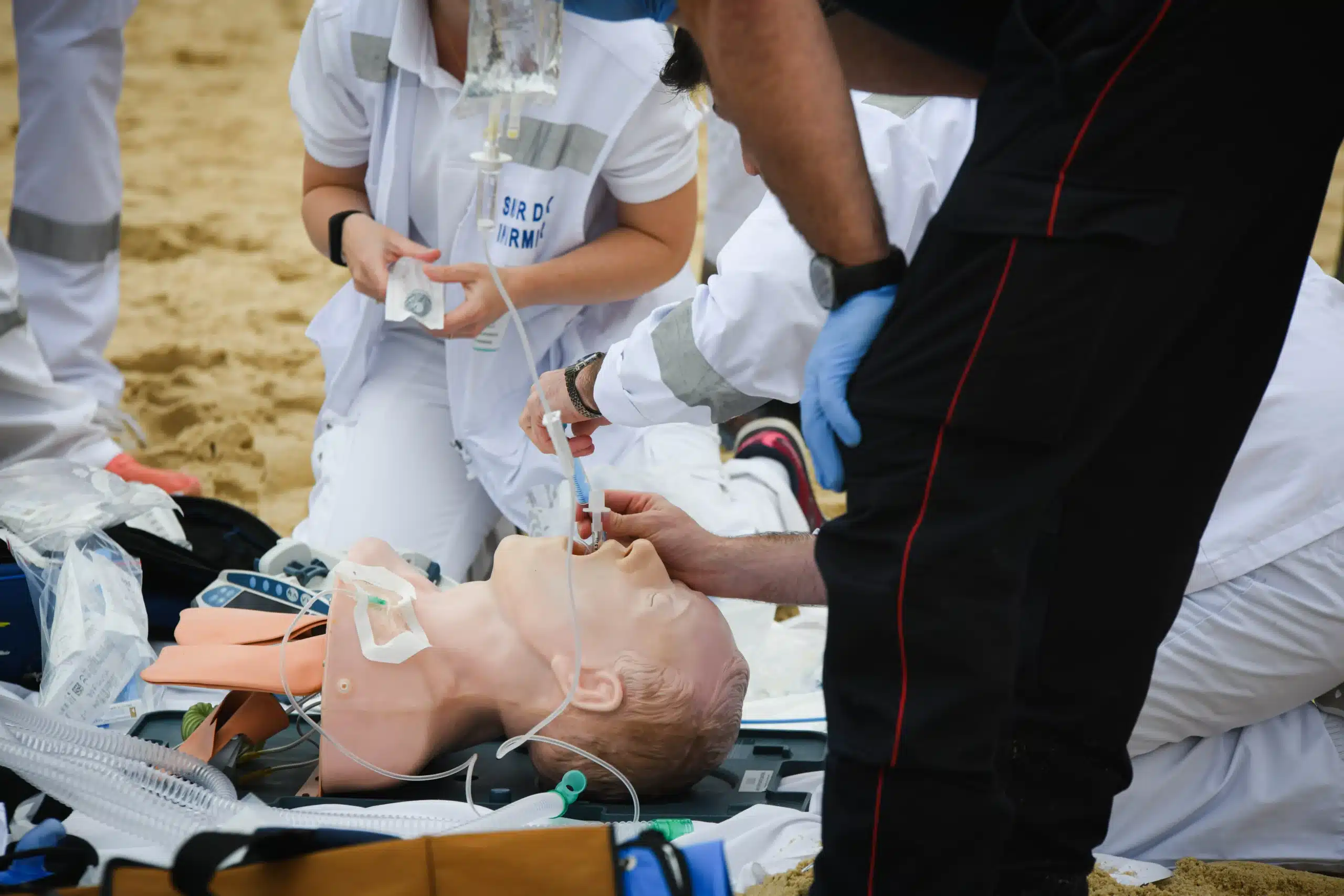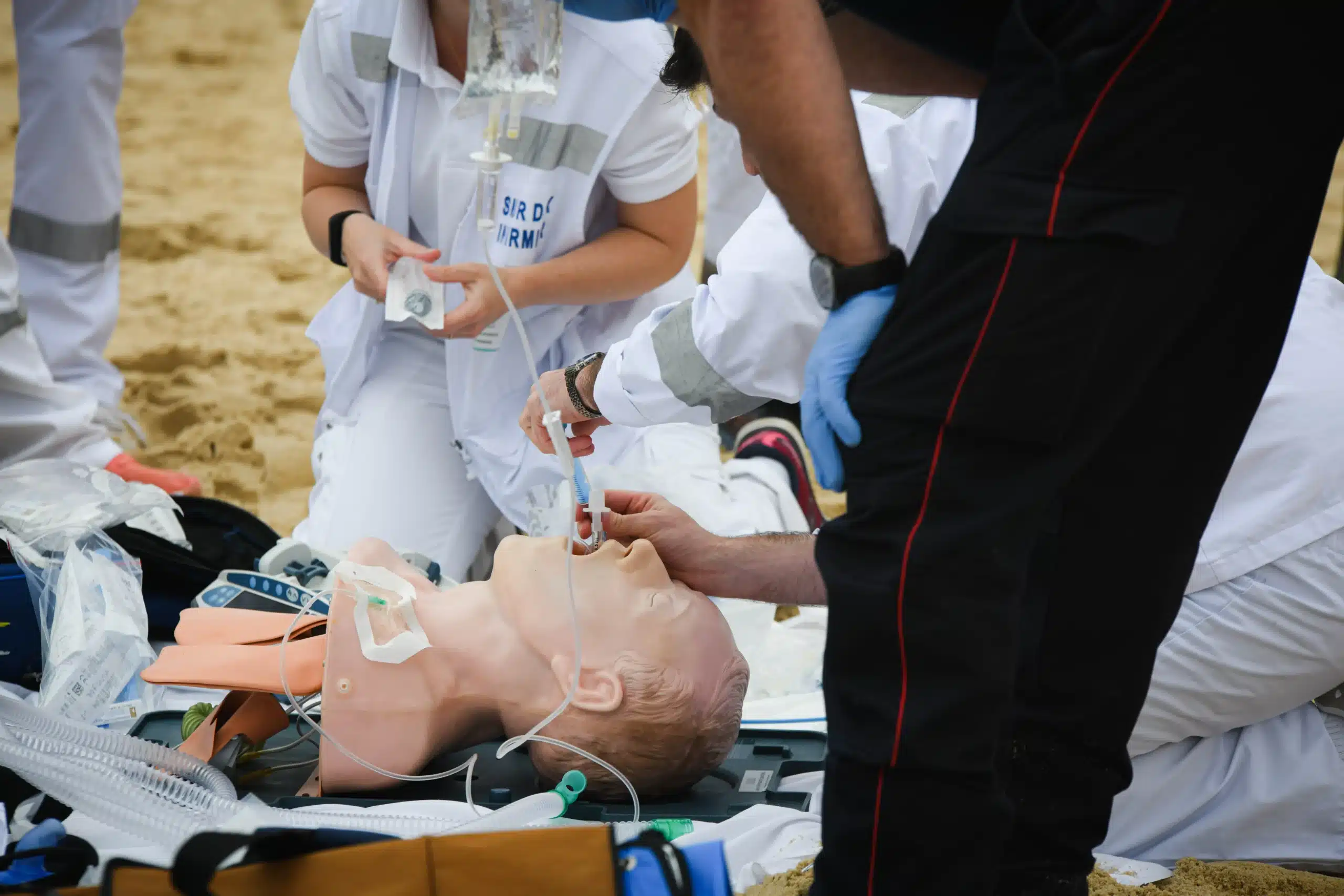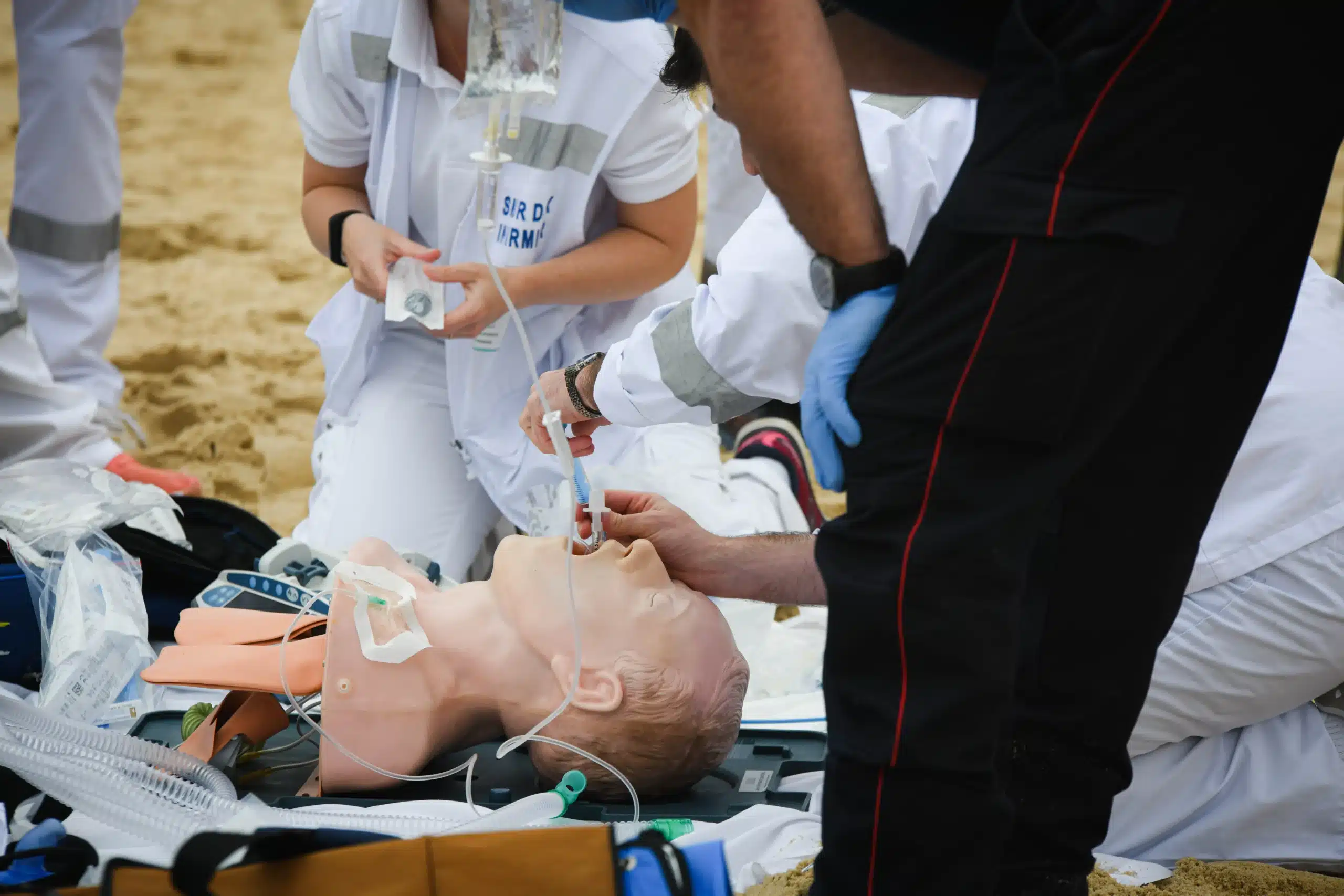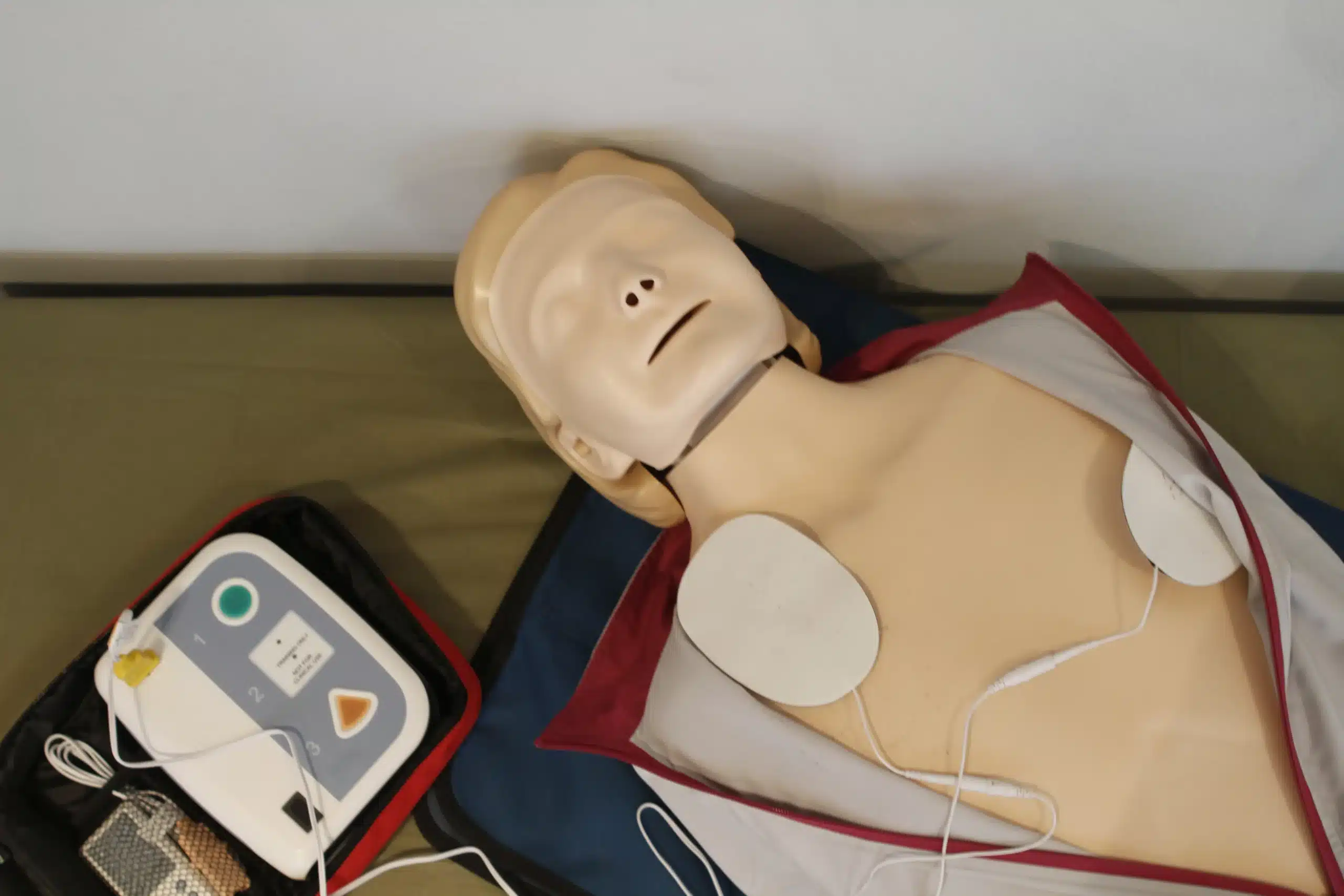Empowering yourself with life-saving skills starts with finding the right CPR courses near me. This guide is your roadmap to navigating the world of CPR training. We’ll explore the different levels of CPR certification, from basic to advanced, and help you understand which one aligns with your goals. You’ll learn about the various course formats available, including in-person, online, and blended learning, and discover the pros and cons of each. We’ll also delve into the certification process, discuss renewal requirements, and emphasize the importance of maintaining your CPR skills over time. Whether you’re a healthcare worker, a student, a parent, or simply a concerned citizen, this guide will equip you with the knowledge to choose a CPR course that fits your lifestyle and empowers you to make a difference.
Key Takeaways
- CPR certification empowers you to save lives: Whether you’re a healthcare professional, need it for work, or simply want to be prepared, find a CPR class that fits your needs and goals. Pleasanton CPR Classes offers various levels of certification, from basic to advanced, to equip you with the skills to make a difference.
- Find the right CPR course format and provider: Consider in-person, online, or blended learning options based on your learning style and schedule. Research reputable providers like the American Heart Association and local training centers such as Pleasanton CPR Classes.
- Stay current with your CPR skills and certification: Regular practice and renewal courses ensure you’re always ready to respond effectively in an emergency. Local resources and training centers can help you maintain your skills and stay up-to-date with the latest guidelines.
What is CPR and Why is it Important?
Cardiopulmonary resuscitation (CPR) is a lifesaving technique used when someone’s heart stops beating effectively. It combines chest compressions and rescue breaths to circulate oxygenated blood to the brain and other vital organs until emergency medical services arrive. Learning CPR is essential because it dramatically increases the chances of survival during cardiac arrest. With hundreds of thousands of cardiac arrests happening each year in the US alone, knowing CPR can truly make a difference. Bystander CPR can double or even triple a victim’s chance of survival. CPR isn’t just for healthcare providers; it’s a valuable skill for everyone – teachers, coaches, parents, and anyone who wants to be prepared to help in a crisis. Consider CPR and First-Aid certification courses to empower yourself with this life-saving knowledge. You can find American Heart Association courses right here in Pleasanton.
CPR Course Options
Choosing the right CPR course depends on your specific needs and career goals. Here’s a breakdown of common CPR certifications:
Basic Life Support (BLS)
BLS certification focuses on single-rescuer CPR and is ideal for healthcare providers, first responders, and anyone in a field requiring CPR knowledge. You’ll learn essential life-saving skills for adults, children, and infants, including CPR, AED use, and relief of choking. Pleasanton CPR Classes offers BLS certification with a low price guarantee, making high-quality training accessible, and daily classes make scheduling convenient.
Advanced Cardiac Life Support (ACLS)
ACLS certification builds upon BLS skills and is designed for healthcare professionals who manage cardiopulmonary arrest or other cardiovascular emergencies. This advanced course covers topics like airway management, pharmacology, and team dynamics. ACLS training is often combined with PALS certification for comprehensive pediatric and adult emergency care. You can find ACLS courses in Pleasanton through various providers.
Pediatric Advanced Life Support (PALS)
PALS certification focuses on the specialized needs of infants and children during medical emergencies. This course is crucial for healthcare providers working in pediatrics, emergency medicine, or intensive care. PALS covers topics like respiratory distress, shock, and post-resuscitation care. Like ACLS, it emphasizes team-based resuscitation and effective communication. Consider PALS training if you work with children in a medical setting.
First Aid & CPR
Combining CPR training with first aid skills provides a well-rounded approach to emergency preparedness. These courses teach how to respond to common injuries like burns, cuts, and fractures, in addition to life-threatening situations requiring CPR. First Aid and CPR certification is valuable for anyone, from parents and teachers to workplace safety officers and community members.
Find Reputable CPR Training
Finding the right CPR training is crucial for learning effective, life-saving skills. Here’s how to find reputable CPR classes near you:
Accredited Organizations
Look for courses from nationally accredited organizations like the American Heart Association (AHA). The AHA offers a range of CPR and First Aid certification courses, ensuring your training aligns with established standards. Safety Training Seminars, a woman-owned AHA Training Center, provides various courses, including BLS, ACLS, PALS, and First Aid, giving you options to match your specific needs.
Local Training Centers
Pleasanton CPR Classes offers a variety of certification courses, from basic CPR and first aid to more advanced life support training. This makes it easy to find a program that fits your personal or professional goals. Many local training centers offer daily classes, making scheduling convenient. Check out options in surrounding areas like Dublin and San Ramon if you’re having trouble finding a time that works for you.
Reviews and Recommendations
Before committing to a class, do some research. Look at online reviews and recommendations to understand the training provider’s reputation, instructor qualifications, and course format. These factors can significantly impact the quality of your training. Local resources can often provide valuable insights into the best training options in your area. Word-of-mouth can also be helpful; ask friends, family, or colleagues for their recommendations.
Compare Course Formats: In-Person, Online, Blended
Choosing the right CPR course format depends on your learning style, schedule, and certification requirements. Let’s break down the pros and cons of in-person, online, and blended learning CPR courses to help you decide.
Pros and Cons of Each Format
In-Person CPR Training: In-person CPR classes offer hands-on training and direct interaction with instructors. This format is great for those who value face-to-face learning and appreciate immediate feedback. You’ll practice skills in real-time with classmates, creating a collaborative learning environment. In-person training typically fulfills all workplace and professional licensing requirements, including OSHA requirements. The main drawback might be scheduling, as you’ll need to find a class time that fits your availability. Pleasanton CPR Classes offers a variety of daily class times to accommodate busy schedules.
Online CPR Training: Online CPR courses offer flexibility and convenience. You can learn at your own pace, anytime, anywhere. This format is perfect for those with busy schedules or limited access to in-person training locations. However, online courses typically don’t include hands-on skill demonstrations, which are essential for mastering CPR techniques. Also, online-only certification may not meet all workplace requirements, so double-check your employer’s guidelines. If you need official certification, consider our American Heart Association BLS course.
Blended Learning CPR Training: Blended learning combines the best of both worlds. You’ll complete online coursework at your own pace, then attend an in-person skills session to practice and demonstrate your proficiency. This format offers flexibility while still ensuring you receive the hands-on training necessary for effective CPR. Blended learning courses, like those offered by the American Red Cross, often provide comprehensive certification that meets various workplace requirements.
Choose the Right Format
Think about your learning preferences and schedule when choosing a CPR course format. If you thrive in interactive settings and prefer hands-on learning, in-person training might be the best fit. If you need flexibility, explore online or blended learning options. Most importantly, if your workplace requires OSHA compliance or other specific certifications, ensure the course format you choose meets those standards. Pleasanton CPR Classes offers a low price guarantee on all our courses, so you can find the right fit for your needs and budget.
CPR Course Costs
Knowing the cost of CPR certification is an important part of planning your training. CPR course costs vary based on several factors, including the level of certification, the course format (in-person vs. online), and the training provider. Let’s break down the typical price ranges and explore ways to find affordable, high-quality training.
Average Prices
Pleasanton CPR Classes offers various levels of certification, from basic CPR and first aid to advanced life support. This ensures you can find the perfect fit for your personal or professional goals. Basic Life Support (BLS certification) courses, for example, teach essential life-saving skills, including how to perform CPR on adults, children, and infants. Expect prices to increase for more advanced courses like ACLS and PALS.
Group Discounts & Special Offers
If you’re training with friends, family, or coworkers, inquire about group discounts. Many training centers, including Pleasanton CPR Classes (offered by Safety Training Seminars, a woman-owned American Heart Association Training Center), offer reduced rates for group bookings. This can be a great way to make training more affordable. Keep an eye out for special promotions or seasonal offers that might further lower the cost. Pleasanton CPR Classes is committed to providing affordable training and often has special offers available.
Low Price Guarantees
Pleasanton CPR Classes offers accessible and convenient BLS training with daily classes and a focus on customer service, making getting certified easy and affordable. A low-price guarantee ensures you’re getting the best possible value. If you find a comparable course at a lower price, some providers will match or even beat the competitor’s price. Don’t hesitate to ask about this when choosing your CPR class. Pleasanton CPR Classes has a low price guarantee, so you can feel confident you’re getting a good deal.
What Happens in a CPR Class?
Knowing what to expect can help you feel prepared and confident on the day of your CPR class. Here’s a general overview of what takes place:
Course Length & Topics
CPR courses vary in length depending on the certification level. Basic CPR and First Aid certification can often be completed in a single day, while more advanced courses like ACLS and PALS may require two days. Pleasanton CPR Classes offers a range of options to fit your schedule and learning goals. Regardless of the specific course, you’ll cover essential life-saving techniques, including recognizing the signs of a heart attack or stroke, performing chest compressions and rescue breaths, and using an AED. For those seeking combined training, consider exploring options for CPR and First Aid certification.
Hands-On Practice
CPR classes aren’t just lectures. They emphasize hands-on learning to build your muscle memory and confidence. You’ll practice techniques on mannequins, giving you a realistic experience of administering CPR in various scenarios. This practical training is crucial for developing the skills and reflexes needed to respond effectively in a real emergency.
Assessment & Certification
At the end of the course, you’ll complete a skills assessment to demonstrate your proficiency. Upon successful completion, you’ll receive an official certification card. This certification validates your skills and is often required for specific jobs or volunteer positions. Pleasanton CPR Classes provides certifications recognized by the American Heart Association, ensuring your credentials are widely accepted.
CPR Certification: Process & Validity
CPR certification is a valuable credential, showing you can handle medical emergencies. Understanding the certification process, how long it’s valid, and how to keep your skills sharp is key for anyone looking into CPR training. Let’s break it down:
How Long is Certification Valid?
CPR certifications are typically good for two years. This is because best practices and guidelines in CPR are always evolving. After two years, renewing your certification is a good idea to make sure your skills and knowledge are current. Staying up-to-date is essential for providing effective care in emergencies.
Renewal Requirements
Renewing your CPR certification usually means taking a refresher course or a full course, depending on when your certification expired. Check with your certifying organization or local training center for their specific rules. Some organizations have easier renewal processes if your certification expired recently. Don’t let your certification lapse – staying current means you’re always ready.
Maintain Your CPR Skills
Even if your certification is valid, regularly reviewing CPR steps and techniques is important. Try to practice regularly. Taking refresher courses between full certification renewals can also help. This reinforces your skills and makes sure you can confidently and effectively respond under pressure. Maintaining your CPR skills isn’t just about having a certification—it’s about being ready to make a difference when it counts.
Choose the Right CPR Course
Knowing which CPR class is right for you depends on your specific needs. Whether you’re a healthcare professional, need CPR for your job, or simply want to be prepared, there’s a course designed for you. Let’s break down the different options to help you choose.
Healthcare Professionals
For healthcare providers like doctors, nurses, and EMTs, BLS certification is often required. BLS courses cover essential life-saving skills for medical emergencies, including CPR, using an AED, and relieving choking. These skills are crucial for responding effectively in professional healthcare settings. Pleasanton CPR Classes offers comprehensive BLS training that meets the American Heart Association guidelines, ensuring you receive high-quality instruction and a recognized certification.
Workplace Requirements
Many workplaces require employees to have CPR and First Aid certifications. This is especially common in jobs involving childcare, education, or fitness. Check with your employer to understand their specific requirements. Combined CPR and First Aid training often covers a range of situations, from treating minor injuries to responding to life-threatening emergencies. Pleasanton CPR Classes offers these combined courses, empowering you to act confidently in various situations. The courses blend theoretical knowledge with practical, hands-on training, preparing you to handle real-world scenarios.
General Public & Parents
Even if it’s not required for your job, learning CPR and First Aid is a valuable skill. Knowing how to respond in an emergency can make a real difference. CPR and First Aid classes are available for everyone, including tailored courses for parents, grandparents, and caregivers. These courses focus on essential skills for responding to emergencies involving children and infants. Pleasanton CPR Classes offers a supportive and comfortable learning environment for all, regardless of background or experience.
Benefits of Local CPR Training
Choosing local CPR training offers distinct advantages. Here’s why learning CPR in your community matters:
Community Preparedness
CPR and First Aid certification equip individuals with the skills to respond effectively to emergencies. When more people in a community are trained, it creates a network of potential lifesavers. This strengthens community preparedness and can significantly improve outcomes during emergencies. Pleasanton CPR Classes offer various CPR and First Aid certification courses designed to empower individuals and enhance community safety. Having readily available, trained residents can make a real difference in those critical moments before first responders arrive.
Networking
Local CPR training provides opportunities to connect with other professionals and community members. Safety Training Seminars, fosters a supportive learning environment where you can build relationships with like-minded individuals. This local connection can be valuable for ongoing learning, sharing best practices, and even career advancement. Plus, practicing CPR alongside your neighbors builds a sense of community and shared responsibility for safety.
Immediate Skill Application
Learning CPR locally means you’re more likely to use your skills within your community. Whether it’s at home, work, or a local event, your training becomes immediately relevant to your surroundings. Pleasanton CPR classes focus on practical skills and real-world scenarios, preparing you to confidently handle emergencies in your community. This direct applicability increases the chances of positive outcomes and reinforces the value of your training.
Top CPR Course Providers
Finding the right CPR course provider is crucial for receiving high-quality training and obtaining a valid certification. Here are some of the leading CPR course providers:
American Heart Association
The American Heart Association (AHA) is a well-respected organization offering a variety of CPR and first aid courses. These courses are designed for both healthcare providers and the general public, covering everything from basic life support (BLS) to advanced cardiac life support (ACLS). The AHA’s emphasis on evidence-based practices ensures participants receive up-to-date training.
American Red Cross
The American Red Cross is another trusted provider of CPR training. They offer various courses suitable for different needs and experience levels. You can find CPR training courses in various formats, including in-person and online classes, allowing flexibility in scheduling.
National Safety Council
The National Safety Council (NSC) provides comprehensive safety training programs, including CPR and first aid certification. The NSC focuses on practical skills and knowledge, equipping individuals with the confidence to respond effectively in emergencies. They offer courses for various settings, including workplaces and community groups.
Pleasanton CPR Classes
Pleasanton CPR Classes offers a range of CPR certification courses, from basic to advanced levels. Serving Pleasanton, Dublin, and San Ramon, they provide CPR and first aid training tailored to the local community. Their commitment to excellent customer service and a low price guarantee makes them a popular choice. For those looking for group discounts, Pleasanton CPR Classes also offers discounted group rates. Check out their CPR class guide for more information.
Local Hospitals & Fire Departments
Many local hospitals and fire departments offer CPR training courses to the public. These courses are often a valuable resource for affordable or free training. CPR Education can help you find CPR classes and first aid training in the Pleasanton area. Contact your local hospital or fire department directly to inquire about available courses and schedules.
Related Articles
- Why CPR is Critical in Healthcare and Life-saving Emergencies
- CPR Courses in Dublin: Your Complete Guide – Pleasanton CPR Classes
- CPR Certification in San Ramon: Your Complete Guide – Pleasanton CPR Classes
- Online CPR Classes in Pleasanton: Your Complete Guide – Pleasanton CPR Classes
- CPR Renewal in Pleasanton: Your Easy Guide – Pleasanton CPR Classes
Frequently Asked Questions
What kind of CPR certification do I need? The right CPR certification depends on your situation. Healthcare providers typically require BLS for their jobs. Other professions, like teachers or lifeguards, often require CPR and First Aid certification. If you want to learn CPR for personal knowledge or to help family and friends, a basic CPR and First Aid course is a great option. Check with your employer or licensing board for specific requirements.
How do I find a reputable CPR class near me? Look for classes offered by nationally accredited organizations like the American Heart Association or the American Red Cross. You can also search online for local training centers or ask for recommendations from friends, family, or colleagues. Reading online reviews can also give you a sense of a training provider’s reputation and the quality of their courses.
What’s the difference between online, in-person, and blended CPR training? In-person classes provide hands-on practice and direct interaction with an instructor. Online courses offer flexibility to learn at your own pace, but may not include the hands-on skills practice required for some certifications. Blended learning combines online coursework with an in-person skills session, offering a balance of flexibility and practical training. Make sure the format you choose meets any workplace or licensing requirements.
How much does CPR certification cost? The cost varies depending on the type of certification, the course format, and the training provider. Basic CPR and First Aid courses are generally less expensive than advanced certifications like ACLS or PALS. Many providers offer group discounts, so check for those if you’re training with others. Also, look for low-price guarantees to ensure you’re getting a good value.
How long is CPR certification valid, and how do I renew it? CPR certifications are typically valid for two years. To renew, you’ll likely need to take a refresher course or a full recertification course, depending on the certifying organization and when your certification expired. Even if your certification is still valid, it’s a good idea to regularly review and practice your CPR skills to stay sharp and prepared for emergencies.
